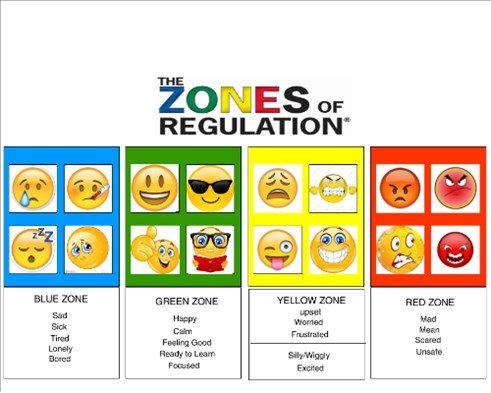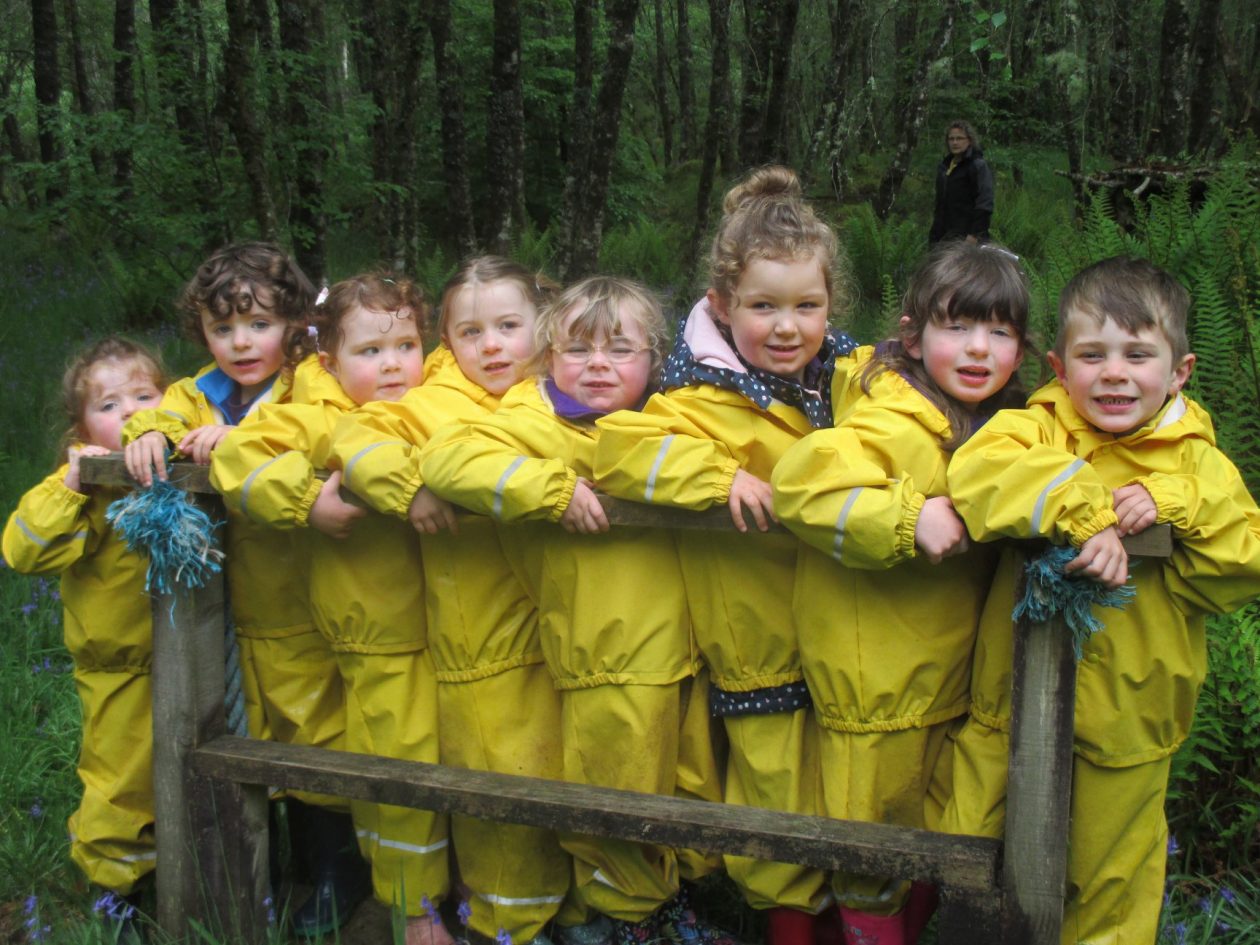
The Zones of Regulation® is a framework and easy-to-use curriculum for teaching students strategies for emotional and sensory self-management. Rooted in cognitive behavioral therapy, The Zones approach uses four colors to help students identify how they are feeling in the moment given their emotions and level of alertness as well as guide them to strategies to support regulation. By understanding how to notice their body’s signals, detect triggers, read social context and consider how their behavior impact those around them, students learn improved emotional control, sensory regulation, self-awareness, and problem-solving abilities. Learning activities and visual supports are included on a USB for easy printing.
Using a cognitive behavioral approach, the curriculum’s learning activities are designed to help students recognize when they are in different states or “zones,” with each of four zones represented by a different color:
The Red Zone is used to describe extremely heightened states of alertness and intense emotions. A person may be elated, euphoric, or experiencing anger, rage, explosive behavior, devastation, or terror when in the Red Zone.
The Yellow Zone is also used to describe a heightened state of alertness and elevated emotions, however individuals have more control when they are in the Yellow Zone. A person may be experiencing stress, frustration, anxiety, excitement, silliness, the wiggles, or nervousness when in the Yellow Zone.
The Green Zone is used to describe a calm state of alertness. A person may be described as happy, focused, content, or ready to learn when in the Green Zone. This is the zone where optimal learning occurs.
The Blue Zone is used to describe low states of alertness and down feelings such as when one feels sad, tired, sick, or bored.
All of the zones are natural to experience, but the framework focuses on teaching students how to recognize and manage their zone based on the demands of their environment and the people around them. Learn more in the article, All the Zones are OK! Tips for Managing the Zones You’re In.
The Zones of Regulation curriculum teaches students how to use calming techniques, cognitive strategies, and sensory supports to stay in a zone or move from one zone to another. Lessons touch on how to read others’ facial expressions and recognize a broader range of emotions in self and others, considering others’ perspectives and the impact our behaviors have on others, building greater insight into events that trigger our students’ less regulated states, and when and how to use tools and problem solving skills. Concepts from the Social Thinking Methodology are incorporated throughout the curriculum to help students develop awareness of how their behavior impacts the thoughts and feelings of others. By tying in Social Thinking concepts, the lessons on self-regulation become more meaningful to the students’ lives as they gain a deeper understanding of the impact their behavior has on their relationships.
Who can teach The Zones of Regulation?
The Zones curriculum can be taught by anyone wanting to help individuals improve their self-regulation skills. This can include, but is not limited to, special and regular education teachers, occupational therapists, speech-language pathologists, psychologists, counselors, behaviorists, social workers, and parents.
Who can benefit from The Zones?
The Zones curriculum targets students who struggle with self-regulation. Initially it was developed considering the needs and learning styles of students with neurobiological and mental health disorders such as autism spectrum levels 1 and 2, attention deficit hyperactivity disorder (ADHD), Tourette syndrome, oppositional defiant disorder (ODD), conduct disorder, selective mutism, and anxiety disorders. However, the curriculum now reaches a much broader population spanning students and adults of various levels of learning inside and outside of the educational environment. Everyone experiences difficulties in self-regulation from time to time, and given The Zones curriculum provides a universal common language, consistent visual structure, and equitable support for all learners, many regular education teachers adopt it for use with their whole class, and entire districts adopt it as a school-wide proactive intervention.
Lessons are designed to be used with kids age 4 (with average to above-average learning abilities) through adulthood. Where relevant, the lessons suggest ways to do the activities with students of varying ages. More mature students and adults may feel that some of the activities are too “childish” for them, but they can still benefit from the discussions the lessons prompt. The depth of understanding will vary, and teaching expectations need to be tailored based on student abilities. Some accommodations are provided to adapt activities. Students with lower cognition may not develop as deep an understanding of The Zones framework, but with consistent exposure, many are able to figure out their zones and follow visual supports to guide them to useful self-regulation strategies. Lessons may require further adaptation when teaching students with cognitive impairments.
About the Author
Leah Kuypers, MA Ed., OTR/L, is the creator of The Zones of Regulation®, a framework designed to teach self-regulation. She is the author of the book and two apps by the same name. In addition to working with students, Leah provides trainings and consultation to parents and professionals on self-regulation and challenging behavior, and conducts workshops on The Zones framework to groups around the world. Explore her webinars and trainings on her website, www.zonesofregulation.com. She resides in Minneapolis, Minnesota, with her husband, son, daughter, and their dog.
About the Zones of Regulation App
Extend learning with The Zones of Regulation app and the Exploring Emotions app! Developed by author Leah Kuypers and software company Selosoft, Inc., they supplement the lessons in the book with interactive games filled with adventure and rewards. Students build their own strategy toolbox, identify triggers, and can even graph the zones they experience across the day, providing data collection on self-regulation. Apps available on Google Play, Amazon, and the Apple App Store.

